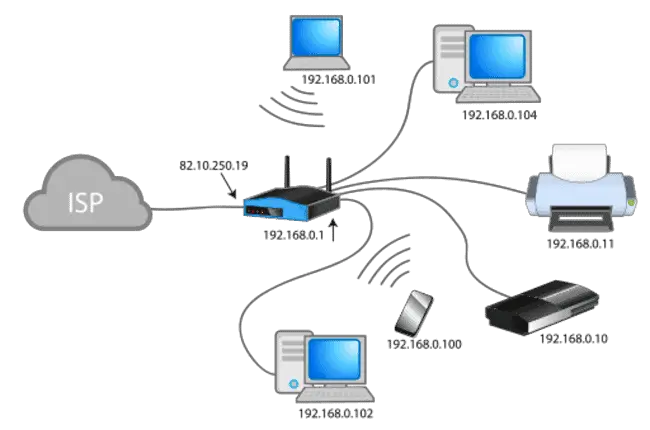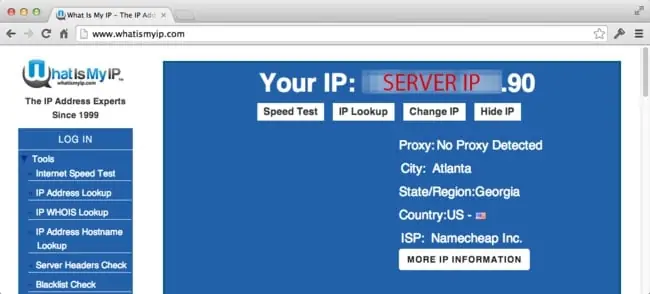It’s not uncommon for us to change internet providers or ISPs, either because we’re moving or because we just want to upgrade to something better. But does switching providers actually change our IP address for our router/devices? Does it make any difference to our network settings, including our IP address?
Your public IP address will always change when changing internet providers, because every router must have a unique public IP only issued to that router by that ISP. Changing providers also means changing routers, which means your devices will also get issued new local IP addresses according to DHCP settings.
In other words, yes, changing providers is one of those things that does uproot your normal network settings, including your public IP address, and changes everything to something new.
Let’s look more into how routers, ISPs and IP addresses all fit together to explain why.
Public vs Private IP Addresses
To understand the issue a bit better, it’s useful to differentiate between public/external and private/local IP addresses under the still predominant IPv4 addressing scheme. Most readers asking this question are probably referring to the public IP address, but we’ll cover both anyway.
IP addresses are unique identifiers for a device, and every device that connects to the internet must have a unique IP address. They are usually in the x.x.x.x format, with each quadrant being from 0 to 255 (eg. 82.31.56.229)
But under IPv4, there actually aren’t enough IPv4 addresses to cover all devices globally, so they have to be split into a public and private range by Network Address Translation or NAT.
See the diagram below for a good demonstration of how NAT splits public IP to private IP addresses:

NAT type resolves the issue of there not being enough unique IPv4 addresses in the world by converting a a public IP address (82.10.250.19 – issued by the ISP and assigned to the router/network) into a private IP address and range (192.168.0.1-254) so it can then dish out the private (local network) IP addresses you see in the image to each device on the home network.
The Information That Public IP Addresses Convey
While there are some more technical factors involved with public IP addresses, the two main things they convey that are relevant to this article are:
- The approximate location of the router/network/residence
- The ISP that issued it.
With the second point especially, it now makes it easier to see the answer more clearly….
What Happens To Your Public IP Address When Changing Internet Providers?
Your public IP address must by definition change whenever you change internet providers, because IP addresses must be unique to each router/network and can only be owned by one provider at any time.
Your public IP address will always change when you change providers because:
- Public IP addresses must be unique and exclusive to each router.
- Public IP addresses also must change if the location changes
- Public IP addresses also must change if the internet provider (ISP) changes, since ISPs are allocated a certain batch of public IP addresses, which they then allocate to customer households. Therefore, a certain public IP belongs to a certain ISP, and cannot belong to two ISPs simultaneously.
Therefore, save for the possibility of some very rare possible scenarios which we’ll cover below, you’re not going to be able to carry over your old public IP address to your new provider. You’ll get a new router, which will be issued with a new public IP address, even if your location is exactly the same as before.
Can You Lock Your Public IP Address In Place? (Fixed IP)
It is true that some internet providers do offer fixed or static public IP addresses. That is, for an extra fee, you can request to have your public IP locked in place, so it doesn’t change. Just leaving your ISP and router to manage the network, your public IP will change from time to time as your ISP does maintenance resets. It will also change if you do other things, like change router, do factory resets and move home.
Some providers do allow you to fix your IP in place as long as you’re with them. Contact their Customer Support to inquire about this, but you usually have to pay an extra fee each month for this service, and not all ISPs offer it.
However, if you change providers, whilst you can always ask, it’s highly unlikely you’ll be able to carry over your old IP address to your new provider. It’s always worth asking, but I wouldn’t bank on it being possible. The best you could hope for is that you new provider also offers fixed IPs, and you can be issued with a new static IP, but still different to your old one.
What Happens To Your Local IP Address When Changing Providers?
The local IP address of devices is less focused on, but it will also change whenever you change providers. This is because, as shown in the NAT diagram above, routers issue or lease local IP addresses along it’s IP range (eg. 192.168.0.1-254) to any device connecting to it’s network. This is basically what Dynamic Host Configuration Protocol or DHCP is for.
Therefore, if the ISP changes, the modem-router will also change, and therefore your new router will have to issue new local IP addresses along it’s DHCP IP range, which will almost certainly be different than the ones issued by your old router.
In many cases, it will not be a million miles apart, with perhaps only the last digit changing for each of the devices on the network, as long as the local IP range is the same between the old and new router (eg. 192.168.0.1-254). Sometimes, the IP range can be different though (eg. 10.0.0.1-254), in which case it will look quite different.
An Example Of Changing Internet Providers
Let’s summarize everything covered so far by giving a simple example of what could typically happen to your public/private IP addresses when changing internet providers, like a before-and-after:
Original ISP – Let’s use the example in the diagram above, and suppose my router’s public/external IP is 82.10.250.19, and the local IP range issued by that router is 192.168.0.1-254 (can vary on routers). And picking the games console, it’s local IP issued by the router is 192.168.0.10
New ISP – Once everything is installed with the new provider, we check on one of those IP lookup tools, and even though we’re in the same house still, our new public IP is listed as something totally different – 77.11.200.21. This is because we’ve got a new router, with a new public IP, issued by a different provider, so it must change (on the flip-side, if we just got a new console, but stayed on the same network, it’s public IP wouldn’t change). However, although the local IP range on the router CAN be different, we find it’s actually the same in this case (192.168.0.1-254). But once we connect the games console up, we find it’s local IP is now 192.168.0.22. The new router has re-done all the DHCP configuration and issued new local IP’s to all devices on the network. Whilst they’re not a million miles apart, the last digit on all the local IP addresses has changed, and will continue to change at set intervals determined by the DHCP Lease Time, where the router takes back local IP addresses and issues devices with new ones.
